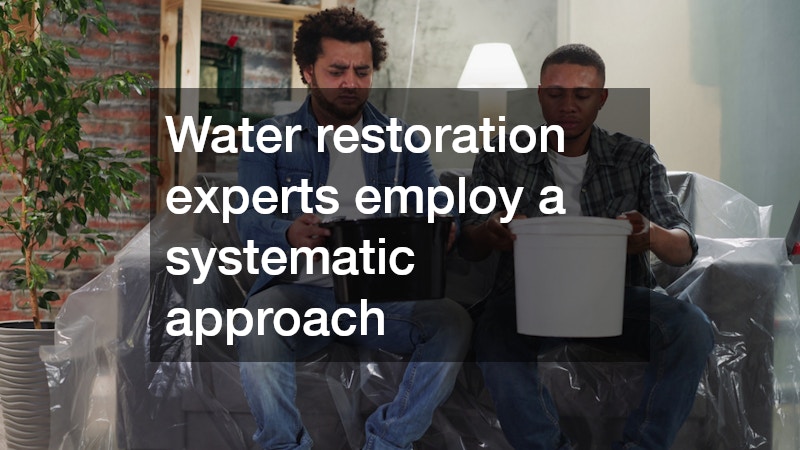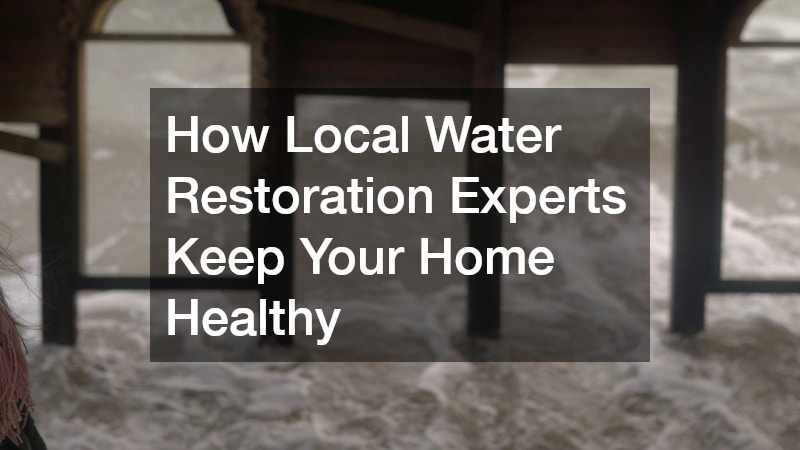Local water restoration experts play a crucial role in maintaining a healthy home environment. Water damage can pose significant health risks, and understanding how professionals mitigate these dangers is crucial for homeowners. From identifying the causes of water damage to employing advanced restoration techniques, these experts provide services that help preserve the integrity of your home.
It is essential to recognize that the actions taken during a water damage event can significantly impact not only the physical structure of your residence but also the health of its inhabitants.
Understanding Common Causes
Water damage can stem from various sources within a home, each requiring specific attention and expertise to address effectively. One of the most prevalent causes is plumbing issues, such as burst pipes or leaky fixtures, which can lead to significant water accumulation if not detected early. Additionally, weather-related events, including heavy rainfall, flooding, and even hurricanes, can overwhelm home drainage systems and lead to extensive water intrusion. Lastly, appliance failures, such as malfunctioning washing machines, dishwashers, or water heaters, are common culprits that can cause sudden influxes of water, posing immediate risks to your property.
Understanding these common causes is vital for homeowners. Many people may not realize that everyday activities, like leaving a faucet running or failing to maintain appliances, can result in serious water damage. Seasonal changes can also contribute to these issues; for instance, freezing temperatures can lead to pipe bursts. Furthermore, neglecting regular home maintenance can increase vulnerability to water damage, making it essential for homeowners to stay proactive in their inspections and repairs.
Providing education about these potential hazards is an integral part of a water restoration expert’s job. By informing homeowners about the risks associated with plumbing, weather-related events, and appliances, these professionals empower individuals to take preventive measures. Knowing these threats can lead to early detection and quicker resolutions before damage escalates, preserving not only the home but also the health of its residents.
Assessing Water Damage
Water restoration experts employ a systematic approach to assess the extent of water damage in a home. This assessment typically begins with a thorough visual inspection of the affected areas to identify sources of water intrusion and evaluate the damage’s severity. Professionals often utilize specialized moisture detection equipment to measure humidity levels in the walls, floors, and other materials, providing a comprehensive understanding of the damage’s scope. This step is critical, as it allows experts to create a tailored restoration plan for the situation.
After the initial visual assessment, professionals will often conduct a more detailed analysis of the home’s infrastructure, including checking for hidden pockets of water that may not be immediately visible. They may inspect areas behind walls, under floors, and within ceilings where water can accumulate unnoticed. This thorough investigation is essential in determining whether structural elements have been compromised and if any demolition might be necessary in the restoration process. Proper assessment ensures that all areas requiring attention are identified and addressed.
Once the assessment is complete, restoration experts communicate their findings to the homeowners, discussing the recommended next steps and possible solutions. They provide valuable insights into the potential risks associated with the damage, such as mold growth, and how to prevent further issues from arising. Clear communication allows homeowners to understand the importance of timely action in the restoration process, helping mitigate long-term consequences and preserve their home’s integrity.
Removing Excess Water
To effectively remove water from a home, restoration experts utilize a variety of techniques and state-of-the-art equipment designed for rapid and thorough water extraction. The first step typically involves employing powerful pumps and vacuum units to eliminate standing water quickly. Depending on the severity of the water intrusion, experts might use truck-mounted or portable extraction systems, ensuring that as much water as possible is removed in a short amount of time.
After extracting the bulk of the water, restoration professionals employ advanced drying equipment, including industrial-grade dehumidifiers and air movers, to thoroughly dry out remaining moisture in the affected areas. This equipment is crucial in preventing further damage, such as warping and rot, which occurs when moisture lingers in materials. The drying process must be adequately monitored to ensure optimal performance and effectiveness, making the expertise of water restoration professionals invaluable during this phase.
Finally, experts will often take additional steps to confirm that the drying process is complete, assessing moisture levels in materials with specialized meters. They may also implement air purification techniques to enhance indoor air quality, removing any contaminants and reducing health risks associated with mold and mildew. This comprehensive approach guarantees that the affected areas are not only dried but also safe and healthy for the occupants of the home.
Drying and Dehumidification
Proper drying and dehumidification play a critical role in the water restoration process, primarily due to their influence on mold growth prevention. When water is not adequately removed and dried, it creates a perfect environment for mold spores to thrive, which can begin to colonize in as little as 24 to 48 hours. Mold not only damages property but can also impact the health of residents, leading to respiratory issues and other health concerns. By prioritizing effective drying and dehumidification, restoration experts help mitigate these risks significantly.
In addition to mold prevention, proper drying is essential for preserving the structural integrity of the home. Materials such as wood, drywall, and insulation can weaken over time when exposed to excess moisture, leading to costly repairs or even necessitating full replacements. Water restoration professionals are trained to evaluate and implement drying techniques that protect these materials to maintain the safety and longevity of the home. By addressing moisture levels promptly and efficiently, they help ensure that homeowners do not face unexpected structural issues in the future.
Effective drying and dehumidification can lead to improved indoor air quality. Excess moisture can contribute to the growth of dust mites and other allergens, significantly affecting those with allergies or asthma. By removing moisture and ensuring that the atmosphere remains dry, water restoration experts enhance overall health and comfort for residents returning to their homes. Ultimately, effective drying and dehumidification are fundamental components that contribute to a safe, healthy living environment after water damage.
Local water restoration experts play an essential role in keeping homes healthy and safe from the effects of water damage. Their expertise in assessing, mitigating, and preventing water damage is invaluable for homeowners striving to maintain a secure living environment. By understanding the causes of water damage, restoration techniques, and preventive measures, homeowners can make informed decisions that protect their homes and well-being. Taking proactive action against water threats is vital for preserving a healthy and safe home for all residents.



